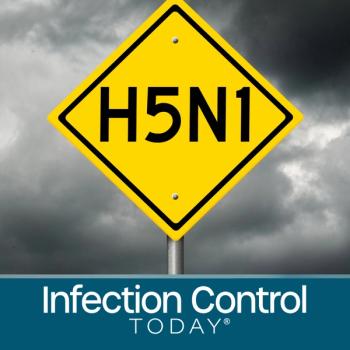
Infusion-Related Infection Prevention: Ignoring Little Details Can Lead to Big Problems
Nancy Delisio, RN, had a frightening phone call from a nurse who was trying to insert a PICC line. The line wasnt threading correctly, so she was calling us, says Delisio, a nurse educator with the Infusion Nurses Society (INS). What was she doing inserting the line, and where was her supervisor or another (trained clinician) to help her? That question illustrates a common theme among many calls INS receives. Bedside nurses dont know the basics something that needs to be taught from the top down. It leads me to believe that maybe staff nurses have heard about a procedure or protocol, but theyve never received appropriate training. Its the small things that lead to problems, Delisio says.
By Karin Lillis
Nancy Delisio, RN, had a frightening phone call from a nurse who was trying to insert a PICC line. The line wasnt threading correctly, so she was calling us, says Delisio, a nurse educator with the Infusion Nurses Society (INS). What was she doing inserting the line, and where was her supervisor or another (trained clinician) to help her?
That question illustrates a common theme among many calls INS receives. Bedside nurses dont know the basics something that needs to be taught from the top down. It leads me to believe that maybe staff nurses have heard about a procedure or protocol, but theyve never received appropriate training. Its the small things that lead to problems, Delisio says.
Most calls Delisio receives involve basic line care, mainly preventing infection in PICC lines. Delisio shares some recent questions:
How do I use chorhexidine to clean a catheter injection site, such as a PICC line?
Chlorhexidine is the skin prep to use, says Carol McLay, RN, MPH, DrPH, CIC, an infection prevention consultant in Lextington, Ky., because its shown such a dramatic reduction in central line-associated bloodstream infection rates. McLay also chairs the Association for Professionals in Infection Control and Epidemiology (APIC)'s national communications committee. The technique will vary with each device, Delisio notes, and healthcare providers should follow the manufacturer's instructions. For the chlorhexidine-soaked sponges included in most kits, the Institute for Healthcare Improvement (IHI) recommends the following steps as part of its central line bundle:1
- Prepare skin with antiseptic/detergent chlorhexidine 2 percent in 70 percent isopropyl alcohol
- Pinch wings on the chlorhexidine applicator to break open the ampule. Hold the applicator down to allow the solution to saturate the pad;
- Press sponge against skin, apply chlorhexidine solution using a back and forth friction scrub for at least 30 seconds. Do not wipe or blot.
- Allow antiseptic solution time to dry completely before puncturing the site (about 2 minutes).1
An article appearing in LPN 2006 says the clinician should clean the site with chlorhexidine before inserting the catheter and during dressing changes.2
When do I need full barrier protection?
Centers for Disease Control and Prevention (CDC) guidelines require full barrier protection cap, mask, sterile gown, sterile gloves and sterile full body drape to insert central venous catheters, PICC lines or exchange a guidewire.3
When do I change an injection cap (like a needleless connector)?
Generally, the CDC recommends changing caps once a week, or when there are signs of blood, precipitate, cracks, leaks or other defects, or when the septum is no longer intact. Specifically, clinicians should follow the manufacturers instructions.4
Beside clinicians often change a needless connector after drawing a blood sample, Lynn Hadaway MEd, RNC, CRNI writes in a November 2012 American Journal of Nursing article. It is better to change the needless connector before drawing blood.5
Blood is aspirated to access catheter patency before each dose of medication is administered, Hadaway writes. Studies have shown several false-positive blood cultures may be obtained when blood is drawn through central venous catheters through contaminated connectors.5
For PICC lines and tunneled catheters, the CDC recommends maintaining aseptic technique and washing hands according to its guidelines.6 The clinician changing the injection cap does need to wear clean gloves.4
How often should I change a dressing at the catheter site?
Nurses and other clinicians who are caring for the patient need to assess the catheter site every shift, McLay says. Look at it, palpate through the dressing (you dont need to remove the dressing), she said. If the patient can talk, ask him or her if he or she is having pain. If the derssing is damp, loose or visibly soiled, change it. Otherwise, do so every five to seven days.
For PICC lines, for example, the CDC recommends changing the dressing 24 hours after catheter insertion. Transparent dressings need changing every five to seven days, unless they are soiled or loose, the CDC guidelines day, and gauze dressings every two days (or as needed if wet, soiled or nonocclusive).4
Get Frontline Input
Frontline clinicians are engaged in patient's (daily) care and they see themselves as having a critical role in ensuring the patient receives appropriate care at the bedside. They're the experts, says Diane Jacobsen, MPH, CPHQ, a director with the Institute for Healthcare Improvement. Rather than giving them another form to fill out or all these different add-ons to the day-to-day routine, embed (relevant policies and procedures) into tools and standardized care.
For example, Medina Hospital, a 118-bed rural facility in Medina, Ohio, developed an interdisciplinary team that was integral to our success. That team included a physician champion, as well as representatives from infection control, nursing, quality and education, according to the IHI mentor hospital website.7
Children's Healthcare of Atlanta, with 505 licensed beds in two facilities, launched a bloodstream infection task force that included front-line staff and members across many disciplines. To get the word to bedside clinicians, the hospital said unit champions brought information to their areas and were instrumental in the success of this performance improvement initiative.7
Some healthcare facilities incorporate reviewing central and intravenous lines as part of daily rounds. Others have built them into electronic medical records or nursing documentation systems.7
The 1,245-bed Swedish Hospital, a teaching facility in Seattle, said the key word in reducing central line-associated (bloodstream infections is) 'teamwork.' That meant heavy collaboration among the IV therapy staff, physicians, bedside nurses and nursing leaders. Also, the hospital has created a line maintenance bundle. Swedish Hospital said it planned to fold that bundle into its electronic medical record system to standardize the practice across the organization.7
When staff isn't getting feedback, they wonder if they're making a difference, Jacobsen says. Seeing that they are getting better results and infection rates are dropping drives improvement. It keeps staff excited, engaged and motivated to stay on track. When something like a central line-associated bloodstream infection does happen, staff are anxious to look back, see what might have gone wrong, and see what they can learn to minimize the likelihood of a future occurrence.
'Ask and Stop'
The bedside nurse, as the patient advocate, needs to be empowered to speak up when he or she sees a problem, McLay says. If the nurse sees someone has missed a step in the (central line insertion) process, or the field is no longer sterile or contaminated, he or she should have the power to halt the process, McLay says. Empowering anyone who sees a problem to speak up is part of a culture of safety. That empowerment, she noted, comes from a hospital or healthcare organization's senior leadership.
Consider Beth Israel Medical Center, a 1,111-bed urban teaching facility in New York City. If a nurse saw someone who wasnt following the appropriate practices, he or she was encouraged to ask and stop the other person. The hospital also worked with the healthcare union to train staff as infection prevention coaches.7
Medina Hospital said it empowered nurses to stop a procedure for breaks in sterile technique or when a coworker was not in compliance with bundle or maximum barrier protections. The Ohio hospital also made it mandatory for clinicians who insert or manage central lines to attend insertion, maintenance and infection prevention classes.7
Having administrative support that empowered nurses to stop a procedure for breaks in sterile technique or for not following procedure was vital to improving our compliance with all elements of the central line bundle, but in particular, with compliance with maximum barrier precautions, the hospital writes in its IHI report.7
Sometimes I think nursing students are pushed through school too fast and they don't get the learning curve they need, Delisio says. They're learning in books but they have limited availability to apply that knowledge at the bedside. Most ask, 'Should I do this, or that.' I always come back to one question, What's are the policies and procedures of the organization? Nurses want to be strong patient advocates, but they have to know the scope of their practice.
Karin Lillis is a freelance writer.
References
1. Institute for Healthcare Improvement central line bundle: chlorhexidine skin antisepsis.
2. Hadaway L. 5 steps to preventing catheter-related bloodstream infections.Â
3. Centers for Disease Control and Prevention. Guidelines for the prevention of intravascular catheter-related infections, 2011.
4. Centers for Disease Control and Prevention.
5. Hadaway L. Needleless connectors for IV catheters.
6. Centers for Disease Control and Prevention.
7. Institute for Healthcare Improvement
The Infusion Nurses Society's (INS) Nancy Delisio, RN, offers a final note of caution:
Medicare/CMS is now following hospital acquired central line infections and are not paying for the extended length of hospital days. Hospitals should be aware of "bundling" of evidence-based interventions for central line insertion, such as hand hygiene, use of maximal sterile barrier precautions, use of chlorhexidine gluconate as a skin antiseptic, optimal catheter site selection, and daily review of the necessity of a central line in order to reduce the risk of central line-associated bloodstream infection. She says most of the resources the bedside clinician needs are online:
-The INS standards of practice are available is at
-For guidelines to prevent central-line associated bloodstream infections, she recommends the CDC's 2011 Guidelines for the Prevention of Intravascular Catheter-Related Infections at
eCentralLineBundle.htm.
Â
Newsletter
Stay prepared and protected with Infection Control Today's newsletter, delivering essential updates, best practices, and expert insights for infection preventionists.





